You may be surprised to learn that there are actually loads of flowers that start with the letter Z. Even though we are at the end of the alphabet, there are still plants to explore and learn about. The great thing about plants that start with Z is that they might be easier to remember than others thanks to the letter Z being rarely used. Did you know the latin nomenclature for Maize is actually Zea?
1. Zaluzianskya
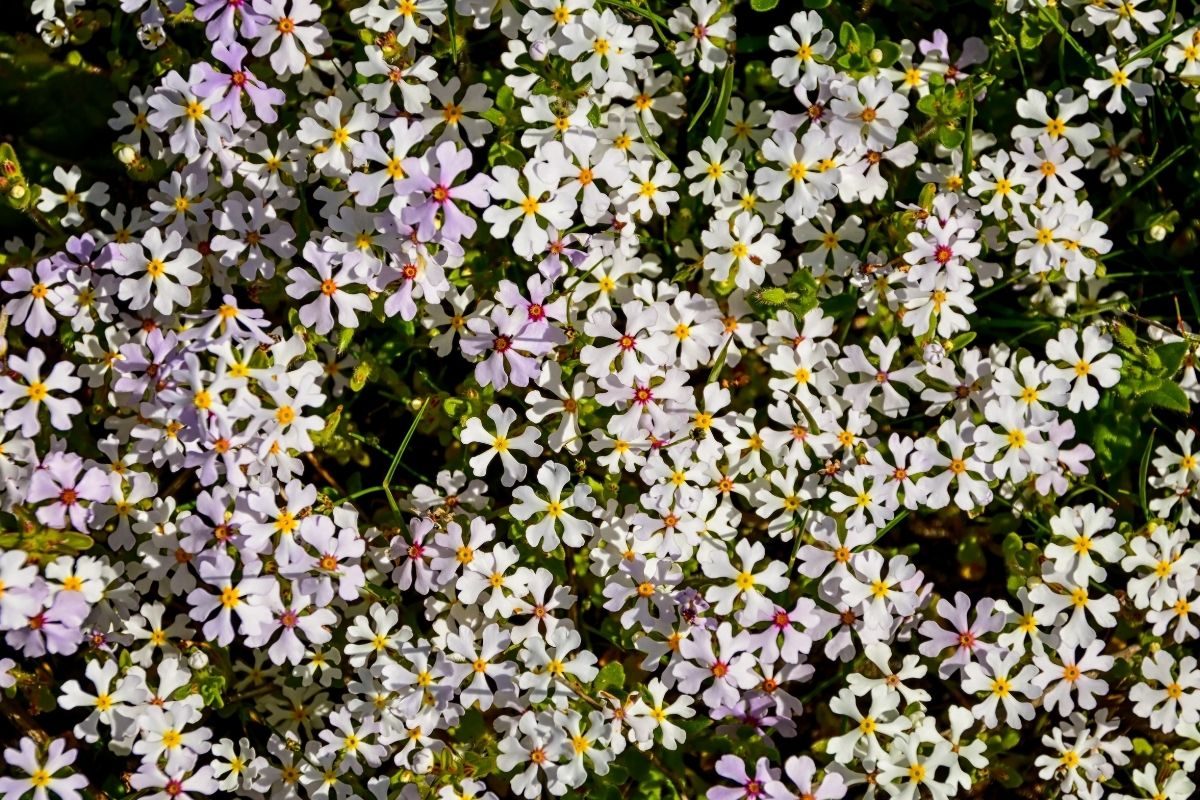
The Zalunzianskya is a semi-evergreen perennial that is quite similar to phlox, as a result it is known as ‘night phlox’. The plant is quite interesting and doesn’t have much written about it as it didn’t come to horticultural recognition until relatively recently. They are endemic to South Africa and thus enjoy dry arid conditions which makes them pretty hardy as they have evolved into this biome.
The flowers are similar to a Phlox, they have evergreen and fragrant leaves and mounds of white flowers that can have a purple hue.
The petals commonly have a small indentation in the top of them that resembles a heart. Their flower apparently closes during the hottest parts of the day and opens again at night – hence ‘night phlox’.They have become popular as ornamental flowers for this cool change at night.
If these flowers are endemic to South Africa then you may be curious about their very different names. Well, the plant was named after Adam Zalužanský ze Zalužan, a very prominent physician and botanist.
He has been recognised as one of the earliest proponents of what we consider modern botany. He raised a lot of theories about plant sex as well as that plants can be placed within an evolutionary sequence and categorised in the same fashion. He also spent a lot of time trying to separate botany and medicine, which at the time were basically the same thing.
2. Zantedeschia

Those familiar with the art of Georgia O’keefe may recognise this plant. The Zantedeschia is a genus of eight flowering species that differ quite vastly and are fairly complex biologically. The most recognisable feature of this plant is the spadix, a type of inflorescence that has one spadix, one ‘petal’, wrapped around a fleshy stem.
While these are commonly referred to as arum or calla lilies, this genus of plant is actually not a true lillie nor Liliacae at all – the plant family the Zantedeschia is part of is the Aracae which are often characterised by their spadix flower.
Commonly the Zantedeschia have long and spongy leaves, some species have maculation or white specs visible on the leaf. They have rhizomatous roots that make them a creeping plant technically. The color of the spadix differs greatly among the eight species. All eight subspecies are endemic to the African continent.
However the plant was introduced to Europe in the 17th century and has since been naturalised to our climate, although is considered invasive in some areas as it displaces other wildlife. Interestingly, half the species will flower in summer while the other half flower in late winter or late spring. Typically, they grow in marshy areas and if watered properly can remain pretty hardy.
In contrast when water is sparse they become deciduous and their leaves/petals fall off. Like many other Aracae that can have irritative qualities when contact is made with skin, and all parts of the plant have some form of toxicity in them and can cause mild medical issues.
Again, why the strange name if the plant is endemic to Africa? Again, this plant is named after a famous botanist. In this case, the plant was named after Italian botanist Giovanni Zantedeschi who discovered many plants endemic to Europe.
3. Zauschneria (Epilobium canum)
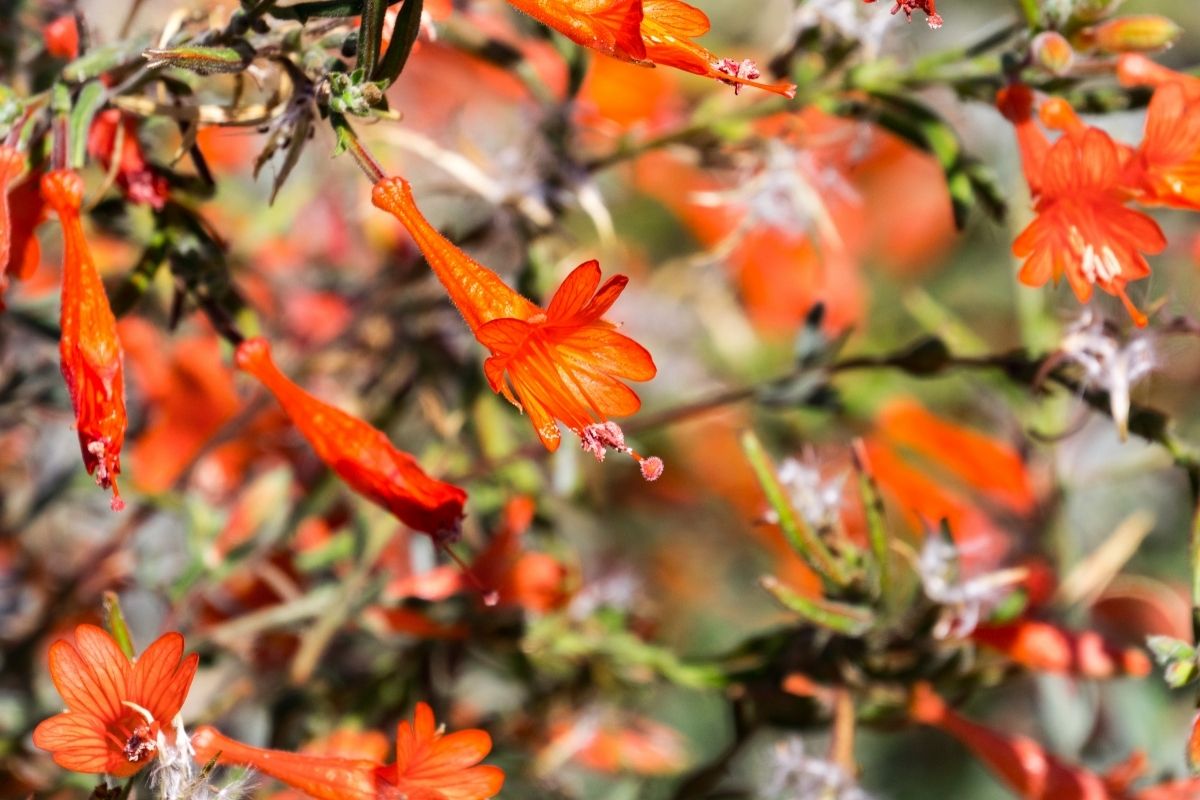
This is another interesting perennial plant with notable flowers that has an interesting history of botany and taxonomy. The plant is willowherb subspecies that is part of the same family as primroses, Onagraceae, but has similar flowers to a Fuschia earning the plant the colloquial name ‘California fuschia’. The plant is endemic to the dry hills of the west coast, particularly Chaparral and California.
The plant was originally noted under the Zauschneria genus, but along with Boisduvalia and Pyrogennema, the plants were considered too genetically similar and subsumed under the Epilobium family. Generally these plants are called willowherbs in western nomenclature.
The Epilobium canum grows around 2 ft high and is a ‘subshrub’. Generally the flowers’ appearance and habitat differs greatly. The flowers are often tubular like a fuschia and can differ in colors but are often some variation of red, blooming in late summer to autumn.
The distinct genus Zauschneria is named, again, after a European botanist. Specifically, Johann Baptista Josef Zauschner – a Czech botanist and physician who helped form modern botany.
Related: 27 Fascinating Types Of Jasmine Plants(Including Photos)
4. Zenobia
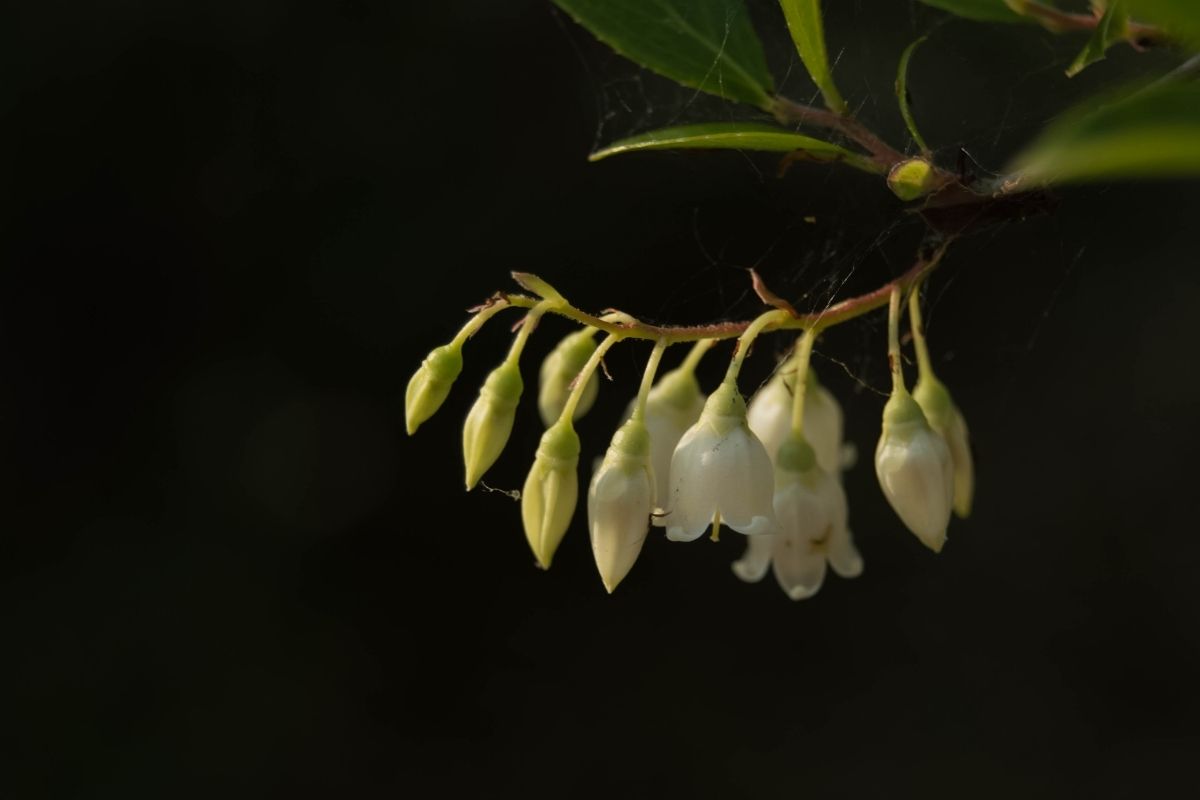
Zenobia or colloquially identified as ‘honeycup’ is a shrub that is endemic to North America. While the plant was formally recognised in 1834, it likely has been around for a long, long, time prior to this as fossils of the plant from mid Miocene epoch have been found in Denmark.
The Xenobia is part of the wider Ericaceae family, and smaller sub family of Vacciniodeae which is also home to the cranberry and blueberry. Generally, the Ericaceae family is grown in acidic soil where other plants may find hard to grow.
There are three subspecies of Zenobia, all of which are endemic to North America and grow quite frequently within the southern states such as Florida and Georgia. Being part of the Ericacecae family the plant grows in acidic soil but is generally pretty low maintenance and pest and disease free. They love sun as well as shade and as a result they grow a lot in mountainous regions with acidic soil.
Generally, the flowers have belled shaped corolla’s which make them quite attractive for borders, especially as they are low maintenance. The leaves are also a wonderful green color and are elliptical, making a stark contrast to the white bell shaped flowers. Up to 200 seeds can be produced in one capsule
5. Zygopetalum
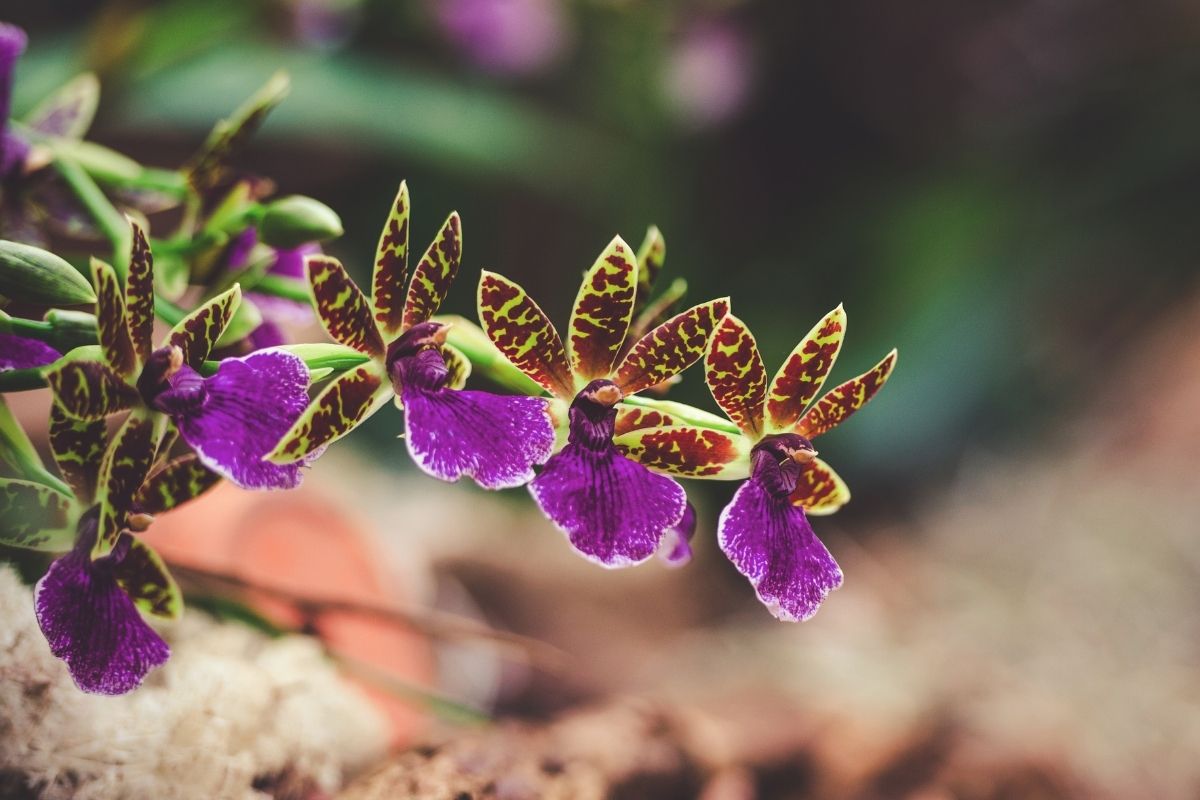
This is agenus of the Orchid family, Orchidaceae, which is one of the more recognisable plant families among westerners. The plant has some 30 species that vary widely, some are terrestrial, meaning they grow from the earth, and some are epiphytes, meaning they grow on other organisms such as trees.
In general, these plants have long frond-like leaves that are long and thin. The flowers are erect and have a strong stem that boasts an orchid flower. These flowers can stick around for a long time and have multiple shades of colors within one flower head. Generally, teh plants are easy to cultivate and their unique flowers make them popular among florist and flower arrangements.
Although, the species is endemic to the mountainous regions of South America, with most species being concentrated endemically in Brazil’s elevated land. The strange name of the plant is from the zugón which is the Greek word for ‘yoke’ referring to the plant’s stem base.
6. Zigadenus
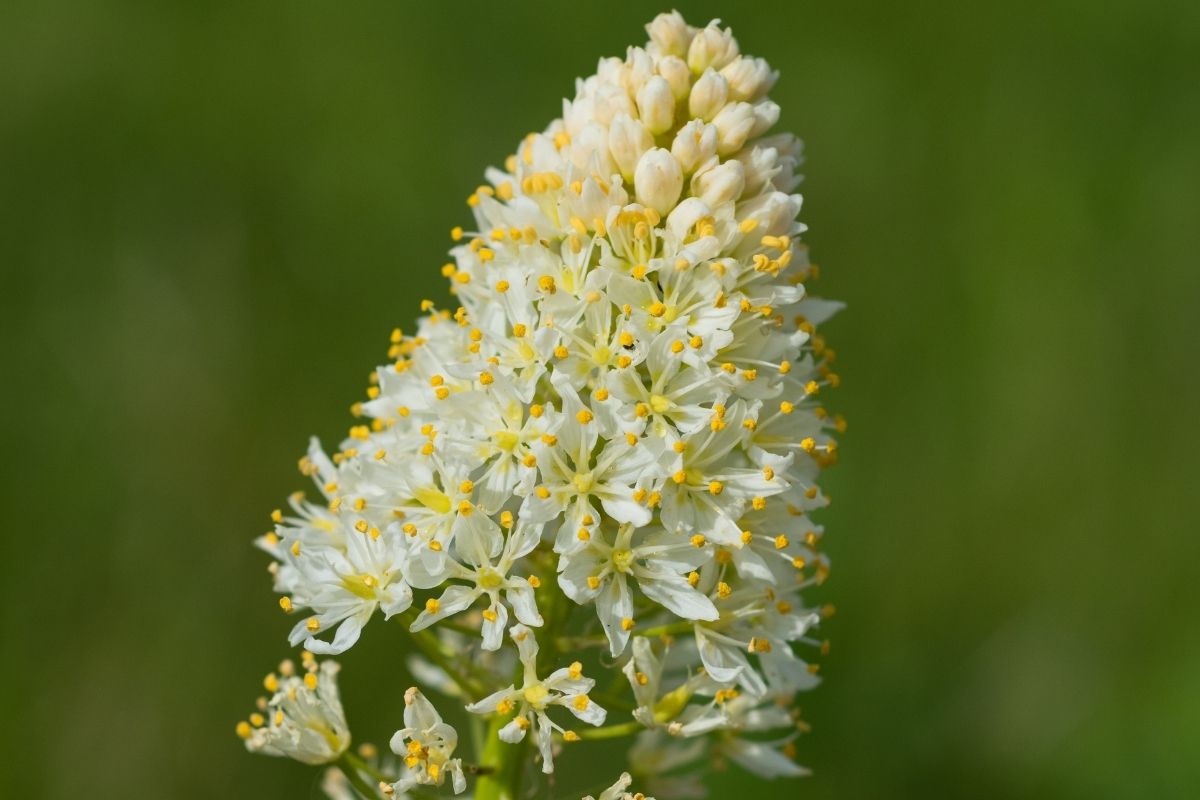
The Zigadenus is a genus of flowering plants that once had many species, but in modern botany there is only one species of this genus that remina. This genus of the Melanthiaceae family is, as a result, commonly found in North America and is endemic to the West.
The plant is regularly found to grow within the boggy marshes of southern states such as Mississippi, the Carolinas, and Florida, as well as others.
Like many other species previously included in the genus, all parts of the plant are extremely toxic and poisonous due to the presence of alkaloids such as zygacine, which we can assume had some effect on the plant’s taxonomy.
As a result the plant has earned the colloquial name ‘sandbog death camas’, many other plants removed from this genus are also referred to as ‘deathcamas’. The plant is so toxic that if it grazes animals who come into contact with it could potentially kill them, and many related species with the same alkaloids have also caused human deaths too.
The Zigadenus generally flowers in the late summer from July to September which makes its toxicity even more effective when animals go to water in heat, as well as more human activity around the bogs during the summer months.
The flowers are fairly unremarkable and can be confused for many other grasses from a distance. Flowers are white to cream colored and exist on panicles. Seed capsules come from the flowers which cause the plants wide dispersion area.
Conclusion
So,as you can see there are actually a lot of plants that we can find at the end of the alphabet. A lot of this is thanks to European names that start with a Z, but there are many more non-flowering plants that also start with Z. This goes to show how many genera are out there and how many can perhaps get overlooked by being at the end of the alphabet.
Editor’s Recommendations
27 Amazing African Violet Plants (With Pictures)







